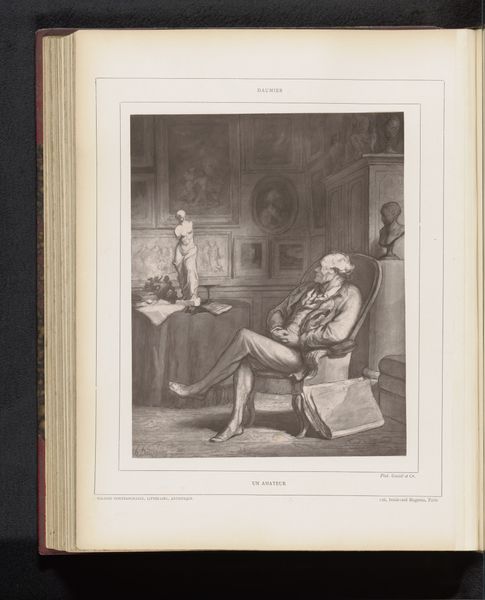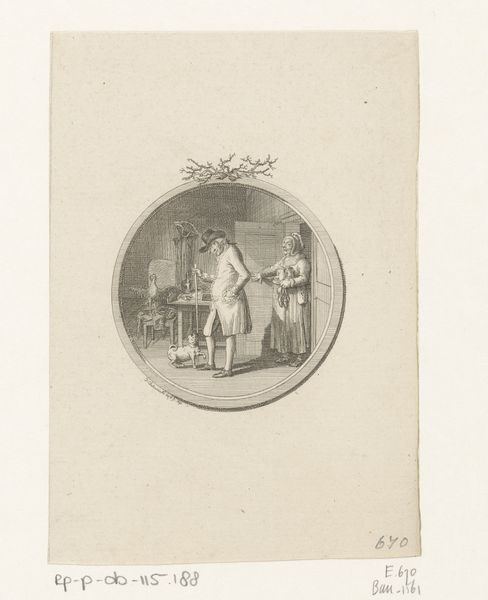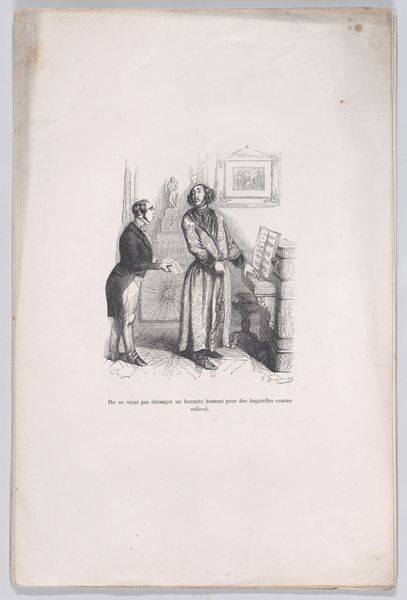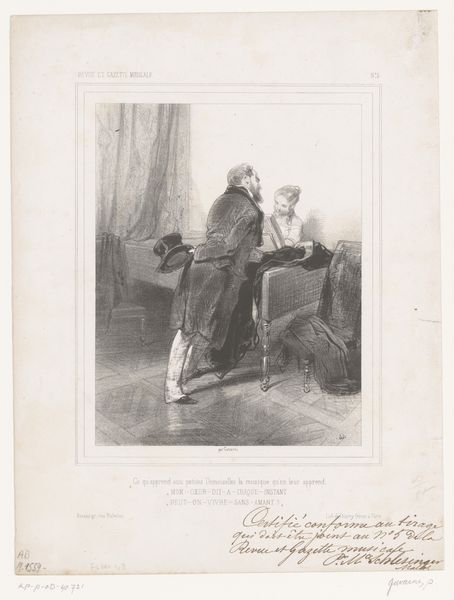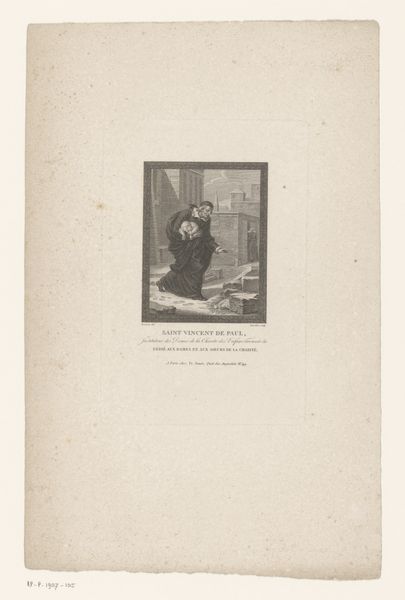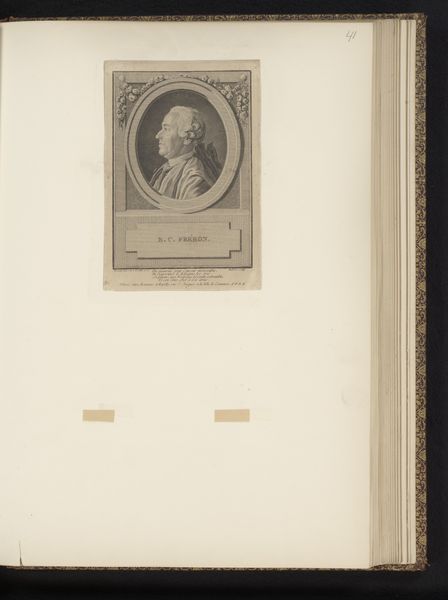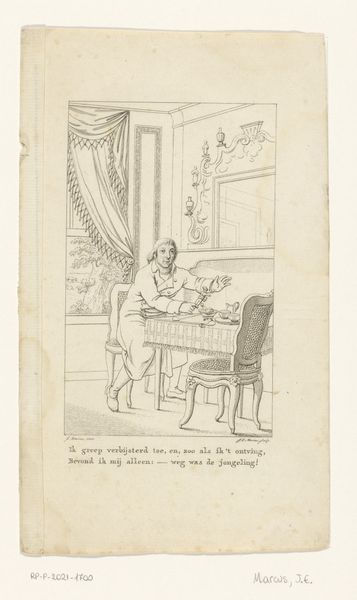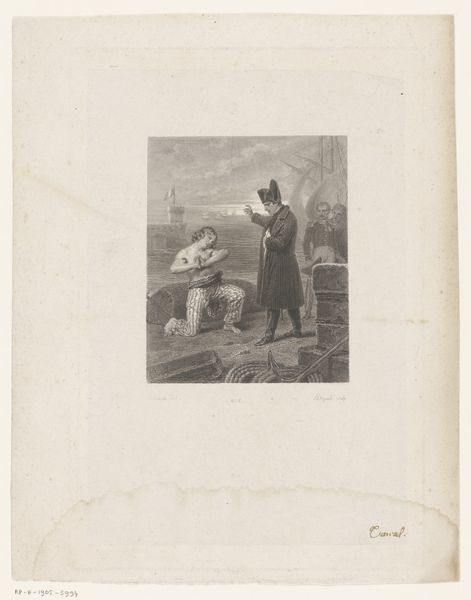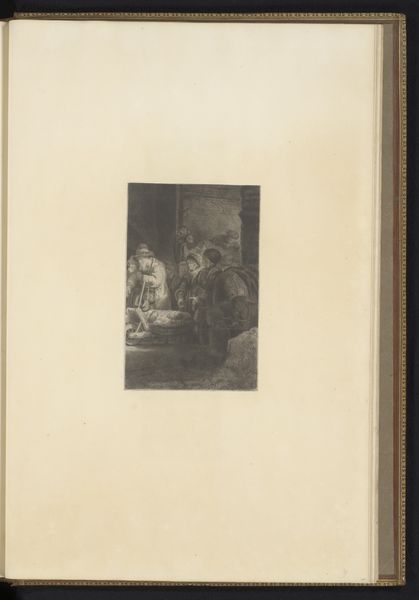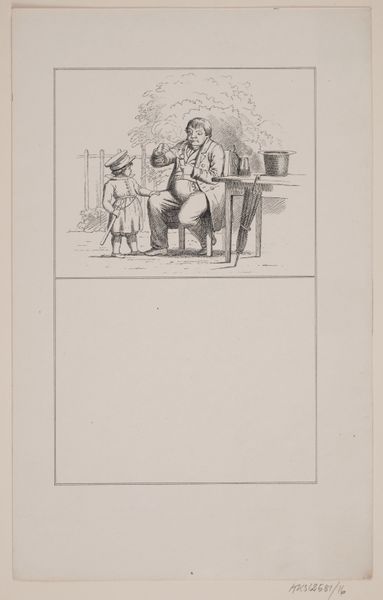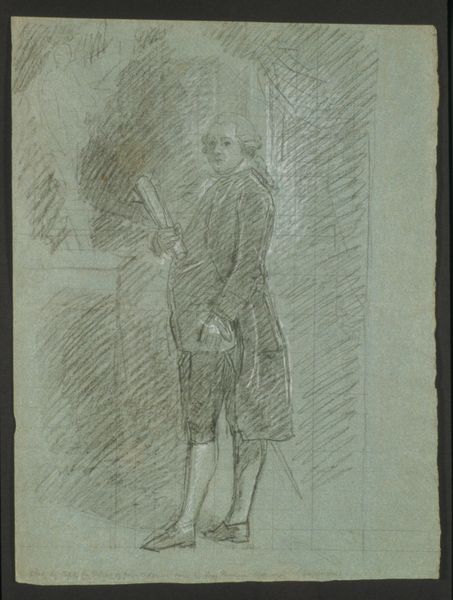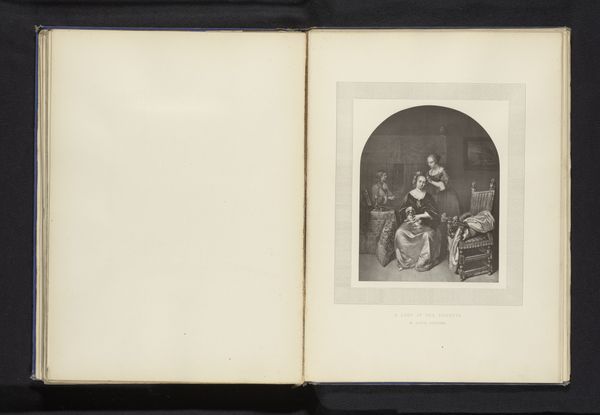
Fotoreproductie van spotprent: Die Abstammung des Menschen, Darwin gelijkend op een aap op zijn boeken zittend 1872 - 1890
0:00
0:00
drawing, pencil
#
portrait
#
drawing
#
caricature
#
figuration
#
pencil
#
history-painting
#
pencil art
Dimensions: height 137 mm, width 97 mm
Copyright: Rijks Museum: Open Domain
Editor: Here we have an anonymous photogravure from somewhere between 1872 and 1890, entitled 'Die Abstammung des Menschen, Darwin gelijkend op een aap op zijn boeken zittend,' which translates roughly to 'The Descent of Man, Darwin resembling an ape sitting on his books.' The mood feels quite satirical, doesn't it? What statements do you believe this piece makes about Darwin's theories and the culture that received them? Curator: The satire cuts deep, doesn’t it? Notice how Darwin is rendered here. The artist isn't just poking fun at his appearance; they’re actively linking him, visually and intellectually, with the ape. This reflects the intense cultural anxieties around Darwin’s work at the time. It suggests his ideas were seen as a descent from established societal order, morality, and religious belief. How might contemporary viewers understand this imagery differently than those in the late 19th century? Editor: Well, nowadays, we've mostly accepted evolutionary theory. So, seeing Darwin depicted this way feels less threatening and more like a historical artifact of scientific and cultural debates. Curator: Exactly! And the act of "sitting on his books" is a loaded one. Consider the books to represent intellectual history. It is literally suggesting his theories undermine existing knowledge. Do you see a potential conversation here about how scientific progress often disrupts entrenched power structures and beliefs? Editor: That's a great point. Science really isn't neutral, is it? The response to Darwin really emphasizes how science gets intertwined with politics, race, and class. The fear and hostility surrounding Darwin's work underscore how much people had, and perhaps still have, invested in their version of reality. Curator: Precisely. What’s fascinating is considering how caricatures like this become tools to not only critique but also to consolidate power and enforce social norms. This piece demonstrates the social dimensions of scientific and intellectual debates and how they reflect cultural tensions. Editor: That's given me a lot to think about. Thanks for sharing that historical context, because I think I viewed it at first from my limited understanding. Curator: Likewise, your reflections really clarified how time shapes the lens we use to understand historical images like this!
Comments
No comments
Be the first to comment and join the conversation on the ultimate creative platform.
